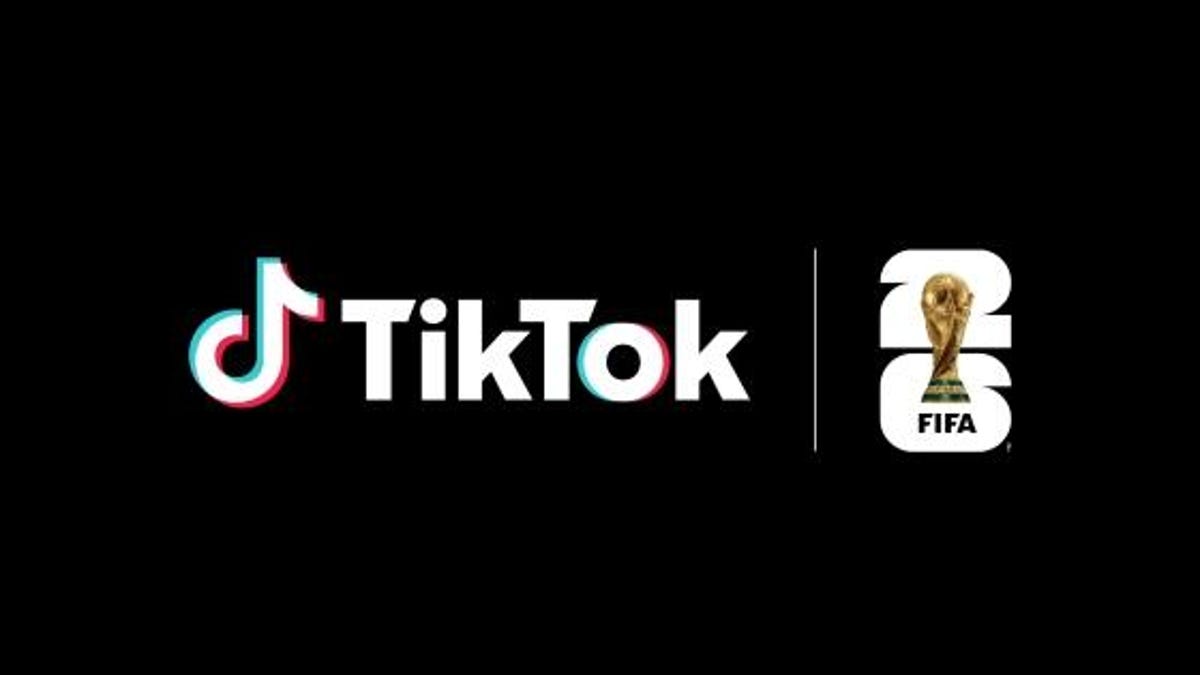Technologies
States and stores end mask mandates, as CDC weighs changing its advice
In the past week, 10 states have declared an end to mask mandates. The CDC still recommends indoor masking, but that position could change soon.

On Monday, five states — California, Connecticut, Delaware, New Jersey and Oregon — announced that they would be ending mask mandates for indoor public spaces, schools or both. Throughout the week, governors in five more states — New York, Illinois, Massachusetts, Nevada and Rhode Island — followed suit, declaring the end of required masks immediately or in the near future.
And on Friday, the Wall St. Journal reported that Walmart will no longer require vaccinated employees to wear masks in stores. The retail giant was one of the first to enact mask mandates for employees back in April 2020.
The omicron variant, which now accounts for nearly 100% of all COVID-19 cases in the US, prompted some states and cities to reinstitute mask mandates during the winter holiday season. As COVID-19 infections and hospitalizations drop sharply, those local mandates are quickly ending.
The recent state decisions stand in contrast to the Centers for Disease Control and Prevention, which continues to recommend everyone wear a face mask in crowded areas, regardless of vaccination status. In a briefing Wednesday, CDC Director Dr. Rochelle Walensky reiterated, «We continue to recommend masking in areas of high and substantial transmission — that’s much of the country right now — in public indoor settings.»
However, Politico reported Wednesday that the CDC is considering changing its stance on indoor masking, «according to four people familiar with the matter.» The agency may shift the guidelines for mandating masks to be based on local hospitalization data, instead of the current metric of COVID-19 cases.
For more, get the latest on COVID-19 boosters, learn whether we’ll need a fourth shot and consider what the «new normal» might look like after COVID-19.
Which states are ending mask rules?
California’s indoor masking requirements for vaccinated people are set to expire on Feb. 15. On Monday on Twitter, Governor Gavin Newsom confirmed that the mandate would indeed end next Tuesday. Unvaccinated people will still be required to wear masks indoors. Also on Monday, Delaware Governor John Carney announced that the state’s universal mask requirement will end Feb. 11 and that the school mask requirement will end March 31.
On Wednesday, New York Governor Kathy Hochul announced that state is lifting its mask mandates for everyone starting Feb. 10. Patrons of indoor business were previously required to be vaccinated or wear masks indoors. Cities, counties and individual businesses can still opt in to the mask-or-vaccine requirement, but it’s no longer required by state law.
Illinois plans to end its statewide indoor mask mandate on Feb. 28, Governor Bill Pritzer declared Wednesday. Pritzker noted that the state has seen its sharpest drop in hospitalizations since the pandemic began. Illinois Department of Public Health Director Ngozi Ezike clarified, «While masks will no longer be required in most indoor locations beginning February 28, they are still recommended.»
Rhode Island also announced an immediate end to mask-or-vaccine requirements for indoor spaces on Wednesday, while Oregon declared an end to masking requirements «no later than March 31.» On Thursday, Nevada Governor Steve Sisolak announced that the state’s mask mandate was over, effective immediately.
Also this week, Massachusetts, New Jersey, Oregon, Rhode Island and Connecticut all announced ends to their states’ school masking requirements. The four states join Delaware in declaring end dates for masks in public schools. Fourteen states and the District of Columbia currently have mask requirements for schools, though several phase out depending on local COVID rates.
Which states currently require masks?
With mandates in Delaware, Nevada and New York ending this week, nine US states and territories currently require masks in indoor settings like restaurants, bars and gyms:
- California
- Connecticut
- District of Columbia
- Hawaii
- Illinois
- New Mexico
- Oregon
- Puerto Rico
- Washington
As noted above, Illinois’ statewide mask rules end Feb. 28, and Oregon’s mandate ends March 31. Washington lifted its outdoor mask requirement this week, but rules for indoor and school masking still remain.
Connecticut requires masks indoors only for unvaccinated people. As of Feb. 15, California will join Connecticut in only requiring that unvaccinated people mask indoors.
The AARP has an excellent state-by-state rundown of mask mandates across the US.
What is the federal mask mandate?
In December, the Biden administration extended its mask mandate for those traveling by trains, buses and airplanes due to concerns around the new omicron variant. Originally intended to expire Jan. 18, the measure is now set to end March 18. The Biden administration has not said yet if it plans to extend the federal mask mandate.
What does the CDC recommend about masking?
The current CDC guidance for mask wearing says that everyone age 2 years and older, vaccinated and unvaccinated, should continue wearing masks indoors when in public places, especially if in a high COVID-19 transmission area, to help prevent spreading the disease to others.
The CDC also says that people outdoors generally do not need to wear masks, unless they are in extended close contact with other people.
In May 2021, the CDC stated that vaccinated people did not need to wear masks anywhere, but reversed course in July when the delta variant of COVID-19 created large numbers of infections, hospitalizations and deaths.
What is the World Health Organization’s position on masks?
The World Health Organization currently recommends masks strongly to mitigate the spread of COVID-19. The organization’s guidance is clear in its recommendation: «Where there is community or cluster transmission of SARS-CoV-2, irrespective of vaccination status or history of prior infection, wearing a well-fitting mask that covers the nose and mouth is recommended for the public when interacting with individuals who are not members of their household.»
At the start of the COVID-19 pandemic, the WHO originally said that there was not enough evidence to support the general public wearing masks and that masks should be reserved for health care workers and those infected with COVID-19. The group changed its position in July 2020, recommending masks for everyone to reduce infections and spread of the virus.
For more information, here’s what you need to know about «long COVID» and how it’s treated. Also, read up on these COVID-19 vaccine side effects and important dos and don’ts of getting your COVID-19 vaccine.
The information contained in this article is for educational and informational purposes only and is not intended as health or medical advice. Always consult a physician or other qualified health provider regarding any questions you may have about a medical condition or health objectives.
Technologies
I Got Up Close and Personal With Boston Dynamics’ New Atlas Robot
Before Atlas takes its first steps into the world of work later this year, I found myself face-to-face with CES 2026’s most talked-about robot on the show floor.

When I say that I went hands-on with the new Boston Dynamics Atlas robot, I mean that I actually held hands with it. This humanoid robot, which CNET just awarded the Best Robot of CES Award, is one of the most advanced in the world, and I couldn’t pass up the opportunity to get up close and personal with it.
This product version of the robot, which is set to be shipped to Hyundai factories imminently to start working, has been the talk of CES this year. The specific Atlas robot I encountered was a static model that wasn’t turned on or fully operational. Our interactions were, therefore, sadly one-sided. Still, I ran my hands over its soft-touch plastic shell and gently prodded at its finger joints, wondering how it would feel if they gripped me back.
People tend to have varying feelings about humanoid robots — understandable given that they are built to some degree in our image, while also usually being stronger than us, with «brains» that we don’t fully understand. Atlas definitely evokes contradictory emotions for me — even more so when I stood face-to-face with it.
I’m in awe of the engineering, a little fearful of its capabilities, hesitant about what it could mean for the future of humanity and charmed by its design and styling. The periwinkle blue iteration of Atlas that I met on the show floor at CES 2026 almost bears more resemblance to a Dyson product than it does the industrial robots that defined Boston Dynamics’ early days, when it was best known for its work with DARPA.
«There’s a lot of really specific things about this robot that probably look a little weird,» said Zachary Jackowski, Boston Dynamics VP and general manager of Atlas. He pointed to the legs, which he described as «like nothing anyone else was doing.»
Atlas’ thighs are narrow set and in line with the torso, while the calves are wider set, attached to their upper counterparts with a circular joint. This robot is, in fact, all subtle curves and soft lines. There are no harsh edges or stark angles.
During a year when CES has been flooded with humanoid robots, Atlas definitely does stand out due to its design. It appears both less classically human and less industrial than some of its peers, while also lacking the often intimidating, featureless faces they tend to exhibit. Instead, it has two low-set cameras resembling eyes placed where you’d usually expect a mouth to be. Its face is a perfect flat circle, defined by an LED halo that gives it a somewhat Pixar lamp effect.
I asked Jackowski why Boston Dynamics decided to skew so relatively unhuman with this version of its humanoid. «Well, it’s not a human,» he said. «It projects the wrong first impression about a robot to have it pretend to be something that it’s not.»
Particularly in the early days of humanoids, he added, robots won’t have anything like human-like intelligence. People should look at it and see it for what it is — a tool for performing tasks safely and efficiently.
In fact, most of the design decisions were made to keep Atlas as simple, scalable and safe as possible, Jackowski said. I remark that there’s some irony in thinking of a humanoid robot as simple, given the complexity of the technology and development process to bring Atlas to life.
The key to making it simple, Jackowski said, is having a strong enough grasp of the technology to «accomplish the complex thing of building a humanoid robot,» but then being able to take it apart and understand that you can use fewer computers and actuators in it while achieving the same results.
And it’s essential to Boston Dynamics that Atlas is perceived as simple. After all, it’s a general-purpose humanoid, which might eventually be sent far and wide to fulfil all manner of roles. Jackowski calls it the «ultimate generalist.»
Simplicity aside, there are aspects of Atlas that Jackowski believes set it apart from other humanoids at the show. «The repairability of this robot is crazy good,» he said. «The runtime is crazy good. The strength is unlike anything.»
From working in Hyundai’s manufacturing plants, Atlas’s job trajectory is to eventually graduate to many of the same industrial environments where Boston Dynamics’ Spot robot works, before moving to bussing tables in the service industry and eventually into the home. The robot will evolve between now and then, Jackowski said. However, this could be an early glimpse of the type of humanoid that will eventually be our housemate.
That’s some way away, though, which is probably for the best. As I gaze up at Atlas, which I’d guess is around the same height as my husband, my feeling is that, however impressive Atlas is, I’m still not ready for it to move in.
Technologies
This Star Wars Dartboard Has a Secret That Will Stop You From Using the Force to Win
This cool dartboard has cameras to track your score and keep you honest

Right in the middle of the high-tech show floor at CES 2026 sits a pub called the Bull and Barrel with some of the coolest dartboards I’ve seen. Target Darts was showcasing its collaboration with both Star Wars and Xbox. Darts may not be for everyone, but I love «shooting some arrows» in my basement with the family. I also love anything Star Wars themed, so these tick a lot of boxes.
The basic Star Wars set comes with a branded board and wall protector that resembles the cockpit of the Millennium Falcon and costs $200. The board is of very high quality, with a tight-knit sisal fiber face, and the protector is thick enough to keep stray shots out of your drywall. The graphics are cool too, with nods to the original Falcon and even have the gold dice hanging above.
The big tech twist to this board, though, is the Omni light ring around the outside. It uses four cameras to track your dart’s position, then sends that info to an app that keeps score. The scoreboard is crisp and clear and uses the voice of legendary darts announcer John McDonald to narrate your game. It’s pretty great to hear his voice announce my terrible scores.
The Omni also allows you to connect with other players worldwide via shared scoreboards. I love the idea of my dad having a board at his house or playing a match with me at my house. It adds a feeling of community to home darts that you don’t normally get outside a pub or bar.
The Omni is a much more expensive proposition than the Star Wars set, coming in at $650, but if you’re serious about the game and a Star Wars fan, it looks to be a great investment.
Technologies
TikTok and FIFA Team Up for World Cup 2026 Coverage
A new team-up aims to make this summer’s tournament more accessible for fans.

If you hadn’t already planned on swiping on TikTok videos of the 2026 FIFA World Cup, a new partnership between the social media platform and tournament organizer FIFA could motivate you to start stretching out your thumbs.
As the soccer tournament nears — it will take place from June 11 to July 19 and span 16 host cities in Canada, Mexico and the US — TikTok will become FIFA’s first «preferred platform.» According to a FIFA statement on Thursday, this entails TikTok providing more coverage of the World Cup, including original content and even livestreaming of some portions of matches.
Don’t miss any of our unbiased tech content and lab-based reviews. Add CNET as a preferred Google source.
You can use the FIFA World Cup 2026 hub on TikTok to find content, match tickets and viewing information, as well as participation incentives such as custom stickers and filters.
In the US, World Cup games will air live across Fox and FS1. If you don’t have cable, you can get a live TV streaming service, such as YouTube TV, which includes those channels. Additionally, every match will stream live on Fox One and the Fox Sports app.
«FIFA’s goal is to share the exhilaration of the FIFA World Cup 2026 with as many fans as possible,» FIFA Secretary General Mattias Grafström said.
-

 Technologies3 года ago
Technologies3 года agoTech Companies Need to Be Held Accountable for Security, Experts Say
-

 Technologies3 года ago
Technologies3 года agoBest Handheld Game Console in 2023
-

 Technologies3 года ago
Technologies3 года agoTighten Up Your VR Game With the Best Head Straps for Quest 2
-

 Technologies4 года ago
Technologies4 года agoBlack Friday 2021: The best deals on TVs, headphones, kitchenware, and more
-

 Technologies4 года ago
Technologies4 года agoGoogle to require vaccinations as Silicon Valley rethinks return-to-office policies
-

 Technologies4 года ago
Technologies4 года agoVerum, Wickr and Threema: next generation secured messengers
-

 Technologies4 года ago
Technologies4 года agoOlivia Harlan Dekker for Verum Messenger
-

 Technologies4 года ago
Technologies4 года agoiPhone 13 event: How to watch Apple’s big announcement tomorrow
